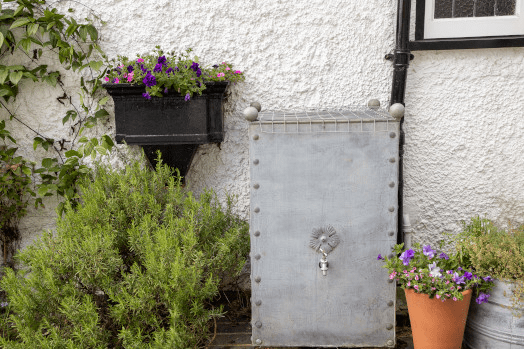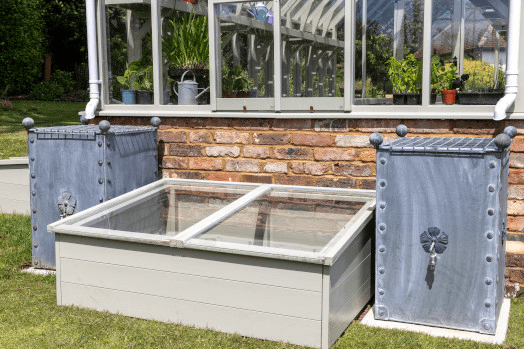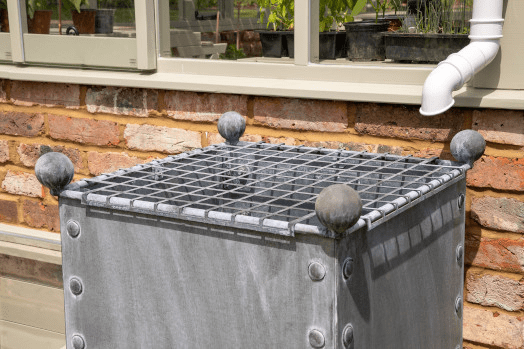
Are you looking for an easy, efficient way to water your greenhouse and plants without wasting precious resources? Installing a metal water butt can be the perfect solution. Not only is stored rain water simple and cost-effective – it’s also great for helping the environment by reducing reliance on nonrenewable sources of energy such as tap water. In this blog post, we’ll go over everything you need to know about how to best use your water butt; from finding the right location all the way down to routine maintenance to harvested water. Get ready to give yourself a much needed break from handling a heavy watering can as they are super easy to install.

What is a water butt and why it’s important to have one
A water butt is a container designed to catch rain water from your roof and gutters. An Arthur Jack water butt can hold from 180 to 330 liters of water, depending on the size. Having a water butt can be a great way to save water and help the environment and you’re also not giving more money to water companies! Instead of using treated tap water or from the hose to water your garden plants and garden, you can collect rain water that’s been collected in the butt and this will obviously help for hosepipe bans. This reduces your water bills and your impact on the environment. Moreover, plants prefer rainwater instead of treated water as it helps them grow healthier and stronger. Rain water is free of chemicals and chlorine and it won’t harm plants. A water butt is easy to install and is a simple and cost-effective way to become more environmentally friendly.

Why is a metal water butt better?
A metal water butt is a better option for collecting rain water than its plastic counterparts for various reasons. Firstly, metal water butts are more durable and last longer than plastic ones, making them a worthwhile investment. Secondly, they are significantly more resistant to extreme temperatures, which means they won’t crack or weaken in freezing conditions or warm weather. Moreover, metal water butts are more secure and less prone to damage from wildlife or accidental knocks. Lastly, they are more pleasing to the eye and blend in better with their surroundings. Ultimately, a metal water butt is an excellent choice for anyone that’s collecting rain water for a functional and attractive manner while simultaneously being environmentally conscious.
How to collect rainwater in a water butt?
Stored water is a simple way to lessen your carbon footprint and help the environment, and stored water in a water butt is an easy and efficient means of doing so. Firstly, choose a suitable location for your water butt, ensuring it is close to a downspout from your roof guttering system. Make sure the ground is level and sturdy enough to support the weight of the butt when it is full, and position it on bricks or a stand to provide better access and gravity pressure. Next, carefully cut the downspout to a size that will allow the water to flow directly into the water butt. Attach a rain water diverter kit between the downspout and the water butt, which will catch the rain water and direct it into the butt. It is essential to keep the water butt clean, and regular maintenance, such as cleaning the gutters and downspouts, will help ensure that the collected water is healthy and safe to use.
Storing rainwater in the water butt for use in your greenhouse or for houseplants
Storing water in a water butt can be a great way to not only conserve water, but to also provide natural nourishment in an organic matter for your plants. By collecting rain water in a water butt, you can help to reduce your dependence on tap water and with the right setup, you can utilize it in your greenhouse or for watering your houseplants which will help your plant growth. As a general rule, plants thrive best when they are given water that is free from chemicals and additives, making harvested rainwater an ideal choice for a natural and eco-friendly solution. Not only is it better for your plants, but it’s also better for the environment.
How do I keep my greenhouse plants watered?
One of the keys to successfully maintaining a greenhouse is to keep your plants watered properly. There are a few different methods you can use to accomplish this. For smaller plants, water plants by hand with a watering can or spray bottle is often sufficient. For larger plants or a greater volume of plants, automatic irrigation systems can be installed to ensure consistent watering. It’s also important to monitor the moisture level of the soil regularly and adjust your watering schedule accordingly. Another helpful tip is to utilize self-watering containers, which have a reservoir that holds water and releases it slowly to the soil as needed. By implementing these watering techniques, you can help your greenhouse plants thrive and flourish.
Is rainwater better than tap water for houseplants?
For indoor gardening enthusiasts, the source of water used for houseplants is a crucial factor in the overall health and growth of the plants, which in turn will help prevent fungal plant diseases. While tap water is a readily available option for most households, one of the benefits of rainwater harvesting is that it is naturally soft, and contains fewer minerals and chemicals compared to tap water, which can be harsh on plant roots. Rain water is also slightly acidic, which can be beneficial for plants that prefer more acidic soil conditions.

In conclusion, a water butt is an important tool to have and use in any garden, especially when it comes to collecting rainwater. It’s crucial to have one that’s made of metal as it not only holds rain water longer, but it’s also more hygienic and easy to clean by simply using a mild washing up detergent. Water butts can be filled up by using rainwater harvesting techniques such as diverter components that collect the flow right from the downpipe or water feeders that make use of your rooftop catchment system.
Rainwater stored in a water butt can then be used to fill up pots or containers in your greenhouse, as well as being put directly onto plants with a watering can – both of these create an efficient way of drip-feeding moisture to your houseplants without wasting precious tap water. Houseplants will benefit from the natural elements found in rainwater and even thrive better than they would when watered with tap water. With so much potential for reducing wastage and improving plant health, we know you’ll appreciate having a good quality metal water butt on hand! So what are you waiting for?


Leave a reply